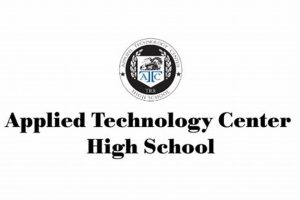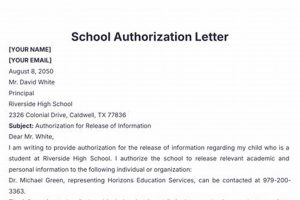Exceptional social media presence for educational institutions involves strategically showcasing student achievements, extracurricular activities, and positive school culture through platforms like Instagram, TikTok, and Facebook. Examples include profiles highlighting award-winning robotics teams, successful drama productions, or impactful community service initiatives. These accounts often leverage visually appealing content and engaging storytelling to connect with prospective students, families, and the wider community.
Effective school-related social media management fosters a sense of community pride, boosts student morale, and enhances communication between the school and its stakeholders. It provides a platform to celebrate student accomplishments, promote school events, and share important announcements, potentially increasing student enrollment and community engagement. Historically, schools relied on newsletters and local media for outreach, but social media offers a more dynamic, immediate, and interactive approach.
This article will explore key factors contributing to successful high school social media strategies, including content creation, audience engagement, platform selection, and measuring impact. It will also delve into best practices for creating a positive online image, managing online safety, and fostering responsible digital citizenship.
Tips for Effective School Social Media Management
Maintaining a compelling and informative social media presence is crucial for modern high schools. These tips offer guidance for cultivating a positive online image and engaging the school community effectively.
Tip 1: Define Clear Objectives. Establish specific, measurable, achievable, relevant, and time-bound (SMART) goals for social media activities. Objectives might include increasing student enrollment inquiries, promoting specific school programs, or improving communication with parents.
Tip 2: Tailor Content to the Platform. Understand the nuances of each platform. Instagram is ideal for visual storytelling, while Twitter excels at quick updates and announcements. TikTok can be leveraged for creative short-form videos showcasing student life.
Tip 3: Showcase Student Achievement. Celebrate student successes, both academic and extracurricular. Feature award-winning projects, student artwork, athletic accomplishments, and community service initiatives.
Tip 4: Prioritize High-Quality Visuals. Use professional-quality photos and videos. Invest in good lighting and editing software. Ensure images are visually appealing and consistent with the school’s brand.
Tip 5: Engage the Community. Encourage interaction by asking questions, running polls, and responding to comments. Promote school events and encourage participation.
Tip 6: Maintain a Consistent Posting Schedule. Regular updates keep the audience engaged. Develop a content calendar to plan posts in advance and ensure a steady flow of information.
Tip 7: Monitor and Analyze Performance. Track key metrics like engagement rate, reach, and follower growth. Analyze data to understand what content resonates with the audience and refine future strategies.
By implementing these strategies, schools can leverage social media to build stronger communities, promote positive school culture, and achieve their communication goals.
These tips offer a starting point for establishing a successful social media presence. Further exploration of individual platform best practices and community engagement strategies will be discussed in the following sections.
1. Content Quality
Content quality stands as a cornerstone of successful social media management, particularly for high schools seeking to establish a positive and engaging online presence. High-quality content informs, entertains, and fosters a sense of community, directly influencing a school’s ability to connect with students, parents, and the broader community. A school consistently showcasing high-quality photography of student events, coupled with well-written captions highlighting student achievements, is more likely to garner positive attention and build a stronger online following than a school posting generic or low-quality content.
Consider a high school’s Instagram account featuring professionally shot photos of a winning science fair project, accompanied by a detailed caption explaining the project’s significance and celebrating the students’ ingenuity. Such content not only promotes the school’s academic achievements but also inspires other students and strengthens the school’s image within the community. Conversely, posting blurry photos with generic captions fails to capture attention or convey the value of the school’s programs and activities. This distinction in content quality directly impacts the overall effectiveness of the social media strategy.
Understanding the link between content quality and successful social media management is crucial for high schools. Investing in high-quality photography, videography, and written content demonstrates a commitment to excellence and strengthens a school’s online reputation. This, in turn, can attract prospective students and families, foster greater community engagement, and ultimately contribute to a more vibrant and connected school environment. The challenge lies in consistently producing engaging, informative, and high-quality content that resonates with the target audience and aligns with the school’s overall mission and values.
2. Engagement Strategies
Effective engagement strategies distinguish high-performing high school social media accounts from less successful ones. These strategies facilitate active interaction with the online community, fostering a sense of belonging and connection crucial for building a strong online presence. Accounts ranking among the top performers leverage various techniques, including interactive polls, question-and-answer sessions, and behind-the-scenes glimpses into school life, to encourage audience participation and generate meaningful conversations.
A high school consistently employing engagement strategies might pose questions related to upcoming events, solicit feedback on school initiatives, or host contests encouraging student-generated content. Such proactive engagement cultivates a dynamic online environment where students, parents, and community members feel valued and heard. Conversely, accounts relying solely on one-way communication, simply broadcasting announcements or information, often struggle to build a thriving online community. Consider a school using Instagram Stories to poll students on their preferred theme for the upcoming homecoming dance. This simple act of soliciting student input not only generates excitement but also demonstrates that student voices are valued. This type of engagement contributes to a stronger sense of school spirit and community pride.
The strategic implementation of engagement strategies is essential for high schools aiming to maximize their social media impact. Active and consistent engagement fosters a loyal online following, strengthens community ties, and ultimately contributes to a more positive and vibrant school environment. Challenges may include allocating sufficient resources to monitor and respond to online interactions and ensuring engagement strategies align with the school’s overall communication goals. However, the benefits of fostering a highly engaged online community far outweigh these challenges, making engagement a key differentiator for top-performing high school social media accounts.
3. Platform Relevance
Platform relevance significantly impacts the effectiveness of high school social media strategies. Selecting appropriate platforms aligns content with audience preferences and platform functionalities, maximizing reach and engagement. Top-performing accounts demonstrate a clear understanding of which platforms best serve their communication goals and tailor their content accordingly. This strategic approach to platform selection is a key differentiator for high schools seeking to establish a robust and impactful social media presence.
- Target Audience Demographics
Understanding the target audience’s platform preferences is crucial. Instagram and TikTok might resonate with younger demographics, while Facebook may be more effective for reaching parents and alumni. A high school aiming to connect with prospective students might prioritize platforms popular among teenagers, while a school focused on alumni engagement might leverage platforms frequented by older demographics. Aligning platform choices with audience demographics ensures content reaches the intended recipients.
- Content Format and Platform Functionality
Different platforms offer varying functionalities, influencing content format and delivery. Instagram’s visual focus lends itself to image-rich storytelling, while Twitter’s concise format suits quick updates and announcements. Schools sharing visually compelling stories of student life might leverage Instagram, while those disseminating time-sensitive information may utilize Twitter more effectively. Aligning content format with platform functionality optimizes message delivery and audience reception.
- Resource Allocation and Management
Managing multiple platforms requires significant resources. Schools must strategically allocate time and personnel to content creation, community management, and performance analysis. Focusing on a select few relevant platforms, rather than spreading resources thinly across numerous platforms, often yields better results. A smaller school with limited resources might concentrate on one or two key platforms, while a larger school with dedicated social media personnel might manage a broader portfolio. Strategic resource allocation maximizes impact and ensures sustainable social media management.
- Platform-Specific Best Practices
Each platform operates according to specific best practices, influencing content optimization and engagement strategies. Understanding these nuances is crucial for maximizing reach and impact. For example, utilizing relevant hashtags on Instagram can significantly expand reach, while participating in trending conversations on Twitter can boost visibility. Schools leveraging platform-specific best practices demonstrate a sophisticated understanding of the social media landscape and are more likely to achieve their communication objectives.
Platform relevance directly correlates with achieving high-ranking status among high school social media accounts. Strategic platform selection, informed by audience demographics, content format, resource availability, and platform-specific best practices, enables schools to optimize their social media efforts, maximizing their reach, engagement, and overall impact within the online community. Failure to consider platform relevance can lead to inefficient resource allocation, diminished engagement, and a less impactful social media presence.
4. Visual Storytelling
Visual storytelling significantly contributes to the success of top-performing high school social media accounts. Compelling visuals, including high-quality photos and videos, effectively convey school culture, student achievements, and important events, fostering deeper engagement than text-based posts alone. This approach resonates with audiences accustomed to visually rich online content, capturing attention and fostering a stronger connection with the school community. A visually driven narrative showcasing a school’s championship-winning basketball team, for instance, can evoke stronger emotions and school pride than a simple text announcement of the victory. Similarly, a short video highlighting a student’s scientific breakthrough can inspire other students and demonstrate the school’s commitment to academic excellence in a more impactful way than a written press release.
The effectiveness of visual storytelling stems from its ability to evoke emotions, create memorable experiences, and communicate complex information concisely. Consider a series of Instagram photos documenting a school’s annual community service day. Images of students volunteering at a local food bank or cleaning up a park convey the school’s commitment to community engagement more powerfully than a written description. This approach not only strengthens the school’s image but also inspires others to participate in future initiatives. Furthermore, visual content tends to be more shareable, expanding the school’s reach and amplifying its message within the broader online community. Visual storytelling, therefore, plays a crucial role in shaping public perception and building a positive online reputation.
High schools aiming to elevate their social media presence should prioritize visual storytelling. Investing in high-quality photography and videography equipment, training staff on visual content creation best practices, and developing a consistent visual brand identity are essential steps. The challenge lies in consistently producing visually appealing and engaging content that aligns with the school’s messaging and resonates with the target audience. However, the enhanced engagement, increased reach, and stronger emotional connection fostered by visual storytelling make it a worthwhile investment for high schools seeking to establish themselves among the top performers in the social media landscape.
5. Community Building
Community building represents a pivotal element distinguishing top-performing high school social media accounts. These accounts leverage social media platforms not merely as communication channels, but as dynamic spaces fostering connection, interaction, and shared experiences among students, staff, parents, and the wider community. This focus on fostering a sense of belonging contributes significantly to a positive online environment and strengthens the school’s overall reputation. A high school actively fostering online community might host virtual events, facilitate discussions on relevant topics, or showcase student-led initiatives, creating opportunities for meaningful interaction and shared experiences. This approach contrasts sharply with accounts utilizing social media solely for broadcasting announcements, which often fail to cultivate a sense of community or generate significant engagement.
The correlation between community building and successful social media management stems from the fundamental human need for connection and belonging. Consider a high school organizing a virtual spirit week through its social media channels, encouraging students to participate in themed dress-up days and share photos using a designated hashtag. This initiative fosters a sense of collective identity and school spirit, even in a virtual environment. Similarly, creating dedicated Facebook groups for different school clubs or parent organizations can facilitate communication, collaboration, and a stronger sense of community among specific groups. These examples illustrate how strategically leveraging social media for community building can enhance school spirit, improve communication, and strengthen relationships within the school ecosystem. Conversely, neglecting community-building aspects can lead to disengagement, diminished online presence, and a less vibrant school environment.
High schools seeking to elevate their social media presence must prioritize community building. This requires a shift in mindset from simply broadcasting information to actively cultivating online spaces for interaction and shared experiences. Challenges include allocating sufficient resources to community management and ensuring online interactions remain positive and respectful. However, the benefits of a strong online community, including increased engagement, improved school spirit, and enhanced communication, make community building a crucial factor distinguishing top-performing high school social media accounts. This focus on fostering genuine connection ultimately contributes to a more positive and thriving school environment, both online and offline.
6. Consistent Posting
Consistent posting directly correlates with achieving high-ranking status among high school social media accounts. Regularly updated content keeps audiences engaged and reinforces the institution’s presence within the online community. This consistent engagement fosters familiarity and trust, contributing to a stronger following and increased reach. A predictable posting schedule allows audiences to anticipate new content, creating a sense of reliability and encouraging repeat visits. Conversely, sporadic or infrequent posting can lead to diminished visibility, decreased engagement, and ultimately, a less impactful social media presence. A school consistently sharing updates on student achievements, upcoming events, and school initiatives maintains a strong connection with its audience. Conversely, a school posting irregularly risks losing audience interest and falling behind competitors in the online landscape. Consider a high school sharing daily updates during a major fundraising campaign. This consistent communication keeps the community informed of progress, generates excitement, and encourages continued support. This contrasts sharply with a school announcing the campaign only once, potentially missing opportunities to engage potential donors and maximize fundraising potential. Consistent posting, therefore, plays a crucial role in maintaining momentum, fostering engagement, and achieving desired outcomes.
The practical significance of consistent posting extends beyond simply maintaining visibility. It cultivates a sense of community, strengthens brand identity, and reinforces the institution’s commitment to communication. Regularly sharing diverse content, including student spotlights, faculty interviews, and behind-the-scenes glimpses into school life, paints a richer picture of the school community. This multifaceted approach fosters a deeper connection with the audience, humanizing the institution and building stronger relationships. Moreover, consistent posting provides opportunities for data-driven decision-making. Analyzing audience engagement with different content types, posting times, and platform usage informs future content strategies and optimizes social media efforts for maximum impact. This data-driven approach allows schools to refine their messaging, target specific audience segments, and tailor content to maximize its effectiveness.
Consistent posting, although seemingly straightforward, presents unique challenges. Maintaining a regular posting schedule requires dedicated resources, meticulous planning, and a robust content creation pipeline. Schools must balance the demand for fresh content with the need to maintain quality and relevance. Over-posting can lead to audience fatigue, while under-posting can diminish visibility. Finding the optimal balance requires careful consideration of audience preferences, platform algorithms, and overall communication goals. However, overcoming these challenges yields significant rewards, establishing the institution as a reliable source of information, fostering a vibrant online community, and solidifying its position among the top-performing high school social media accounts. This consistent engagement, therefore, becomes a cornerstone of successful social media management, contributing directly to enhanced communication, increased community engagement, and a stronger online presence.
Frequently Asked Questions
This section addresses common inquiries regarding effective social media management for high schools, providing insights and clarifications essential for establishing a successful online presence.
Question 1: How can schools measure the effectiveness of their social media efforts?
Effectiveness can be measured through various metrics, including engagement rate (likes, comments, shares), reach (number of users exposed to content), website traffic originating from social media, and follower growth. Analyzing these metrics provides insights into audience response and content performance.
Question 2: What are common pitfalls to avoid in high school social media management?
Common pitfalls include inconsistent posting, lack of a clear content strategy, neglecting community engagement, failing to tailor content to specific platforms, and insufficient monitoring of online conversations. Addressing these potential issues proactively contributes to a more positive and effective online presence.
Question 3: How can schools ensure online safety and responsible digital citizenship on their social media platforms?
Establishing clear social media guidelines, educating students and staff on responsible online behavior, implementing moderation strategies to address inappropriate content, and promoting positive online interactions are crucial for ensuring online safety and responsible digital citizenship.
Question 4: What resources are available to support schools in developing effective social media strategies?
Numerous resources, including online guides, workshops, and professional development opportunities offered by educational organizations and social media platforms, provide valuable support for schools developing and refining their social media strategies. Consulting with experienced social media professionals can also provide tailored guidance.
Question 5: How can schools balance the need for engaging content with the demands of academic priorities?
Integrating social media into existing communication workflows, designating specific staff members responsible for social media management, and leveraging student contributions to content creation can help balance engaging content creation with academic priorities. Efficiently managing resources and streamlining processes ensures sustainable and impactful social media engagement without compromising academic focus.
Question 6: How can smaller schools with limited resources effectively manage their social media presence?
Prioritizing one or two key platforms, leveraging free or low-cost social media management tools, focusing on organic content creation, and actively engaging the school community to contribute content can help smaller schools with limited resources manage their social media presence effectively. Strategic resource allocation and community involvement maximize impact despite limited resources.
Understanding these frequently asked questions equips schools with the knowledge and insights necessary to navigate the complexities of social media management effectively. Implementing these best practices enhances communication, strengthens community engagement, and contributes to a positive and thriving online presence.
The following section will provide case studies of successful high school social media accounts, offering practical examples and actionable strategies for implementation.
Conclusion
Cultivating a robust and engaging social media presence stands as a crucial component of modern high school communication strategies. This exploration of factors contributing to successful social media management within an educational context has highlighted the significance of content quality, strategic platform selection, consistent engagement, and community building. Top-performing high school social media accounts effectively leverage these elements to showcase student achievement, foster school pride, and enhance communication with stakeholders. The analysis of visual storytelling’s impact, alongside practical tips and frequently asked questions, provides a comprehensive framework for understanding and implementing effective social media strategies.
Educational institutions must recognize the evolving digital landscape and adapt their communication strategies accordingly. Embracing social media’s potential to connect with students, families, and the broader community offers significant opportunities to enhance school culture, promote academic excellence, and strengthen stakeholder relationships. Continuously evaluating and refining social media practices, informed by best practices and emerging trends, remains essential for maximizing impact and achieving communication goals within the dynamic realm of social media.







